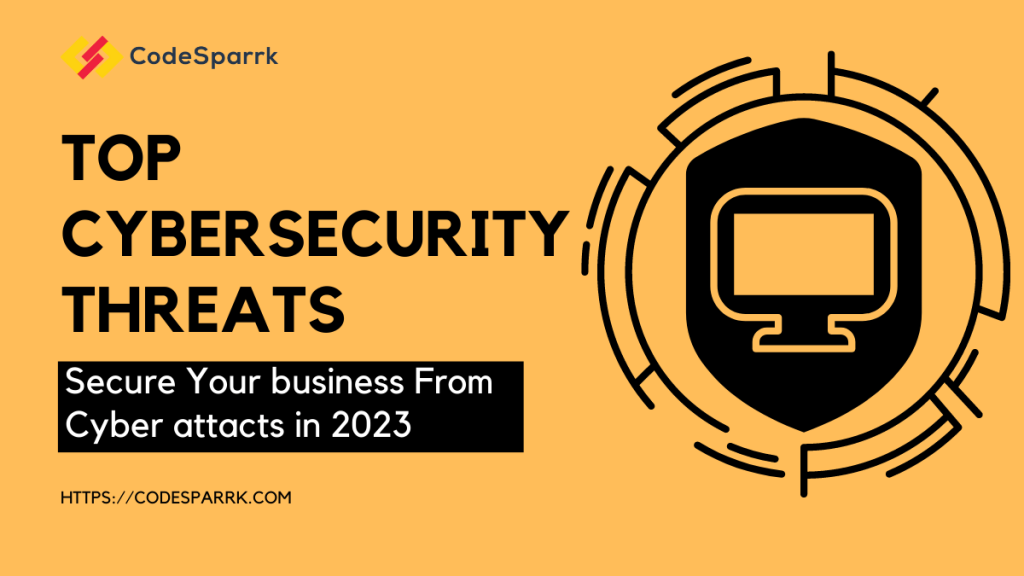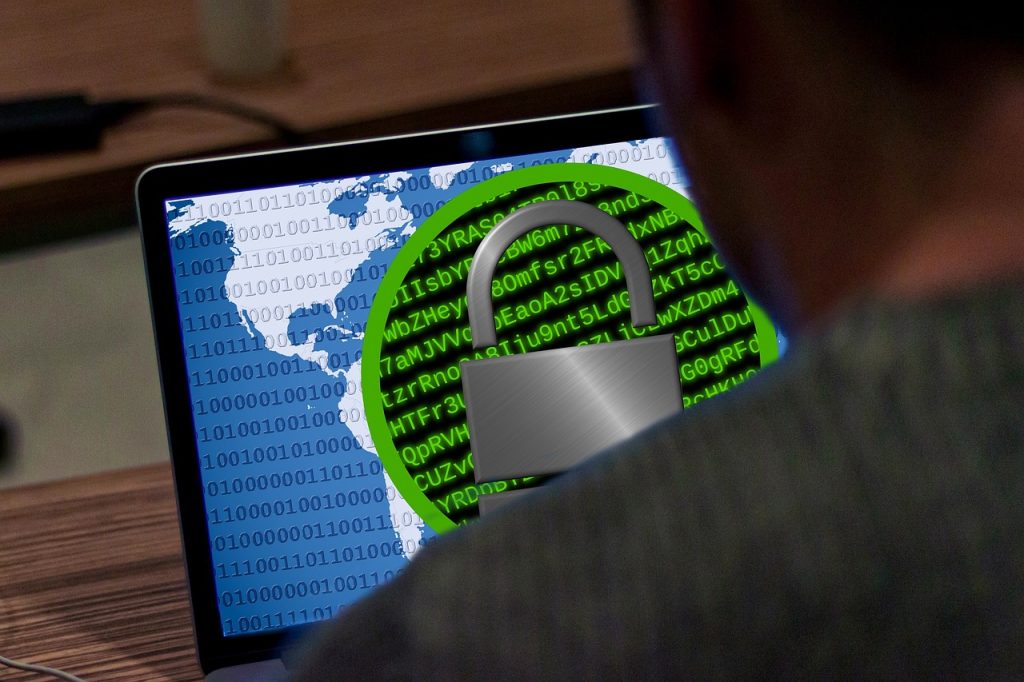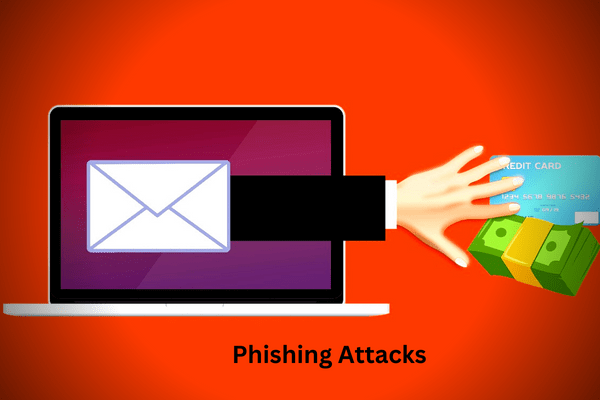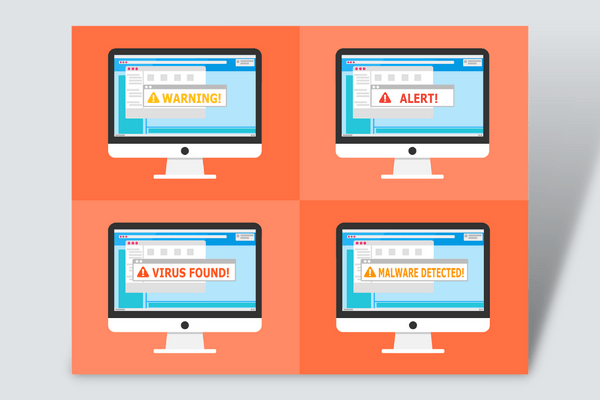Have a Requirement?
We build your dream project from conception to completion!
Leave Your Details and We’ll Get Back to You!
Playback speed:

As technology advances, the risk of cyber-attacks and data breaches increases. Cybersecurity threats can be devastating to businesses and individuals, so it’s important to understand the top threats of 2023. Did you know that cyber attacks cost 38 million dollars have been breached in the year 2022? The risks to organizations, private institutions, and government have increased rapidly. This is why we have brought this blog to you.
In this article, we’ll discuss the top cybersecurity threats of 2023 and how you can protect yourself.
Cybersecurity threats are one of the most serious issues facing businesses and individuals today. With the increasing prevalence of technology, cyber-attacks are becoming more sophisticated and dangerous. As a result, it’s essential to be aware of the top cybersecurity threats of 2023 and how to protect yourself.
In this article, we’ll discuss the top cybersecurity threats of 2023 and provide tips to protect against these threats. We’ll cover the different types of threats, including ransomware attacks, data breaches, phishing attacks, malware, DDoS attacks, cloud security, IoT security, network security, and social engineering. We’ll also answer some frequently asked questions about cybersecurity threats.

The top cybersecurity threats of 2023 are ransomware attacks, data breaches, phishing attacks, malware, DDoS attacks, cloud security, IoT security, network security, and social engineering. These threats can have a devastating impact on businesses and individuals. It’s important to be aware of these threats and take steps to protect yourself. It’s best for you company to train your employees about basic defense techniques about these threats. For that to heppen, let’s walk down the lane of types of Cybersecurity threats.
Ransomware attacks are one of the most common types of cyberattacks. In a ransomware attack, hackers encrypt a user’s data and threaten to delete it unless a ransom is paid. This can have a devastating impact on businesses, as they may lose sensitive data or be forced to pay a ransom.
Data breaches are another major threat. In a data breach, hackers gain access to a user’s confidential data, such as usernames, passwords, and credit card numbers. This can lead to identity theft, financial loss, and other serious issues.
Phishing attacks are also a major threat. In a phishing attack, hackers send malicious emails or texts in an attempt to gain access to a user’s personal information. These attacks can be difficult to detect and can have serious consequences.
Malware is another type of cyberattack. In a malware attack, hackers use malicious software to gain access to a user’s computer or network. This can lead to data loss, financial loss, and other serious issues.
DDoS attacks are also a major threat. In a DDoS attack, hackers flood a user’s website or network with traffic in an attempt to disrupt service. This can lead to lost revenue and data loss.
Cloud security is also an important issue. In a cloud security attack, hackers gain access to a user’s cloud storage or other cloud-based services. This can lead to data loss, financial loss, and other serious issues.
IoT security is also a major issue. In an IoT security attack, hackers gain access to a user’s Internet of Things (IoT) devices. This can lead to data loss, financial loss, and other serious issues.
Network security is also an important issue. In a network security attack, hackers gain access to a user’s network. This can lead to data loss, financial loss, and other serious issues.
Finally, social engineering is a major threat. In a social engineering attack, hackers use psychological tactics to gain access to a user’s confidential information. This can lead to identity theft, financial loss, and other serious issues.
Ransomware attacks are one of the most common types of cyberattacks. In a ransomware attack, hackers encrypt a user’s data and threaten to delete it unless a ransom is paid. This can have a devastating impact on businesses, as they may lose sensitive data or be forced to pay a ransom.
Ransomware attacks can be difficult to detect and even harder to prevent. To protect against ransomware attacks, it’s important to have strong security measures in place, such as antivirus software and firewall protection. It’s also important to regularly back up your data to ensure you have a copy in case of an attack.

Data breaches are another major threat. In a data breach, hackers gain access to a user’s confidential data, such as usernames, passwords, and credit card numbers. This can lead to identity theft, financial loss, and other serious issues.
To protect against data breaches, it’s important to have strong security measures in places, such as two-factor authentication and encryption. It’s also important to use unique passwords for each account and to change them regularly. Additionally, it’s important to be aware of phishing attacks and to never click on suspicious links or attachments.

Phishing attacks are also a major threat. In a phishing attack, hackers send malicious emails or texts in an attempt to gain access to a user’s personal information. These attacks can be difficult to detect and can have serious consequences.
To protect against phishing attacks, it’s important to be aware of the signs of a phishing attack, such as suspicious links or attachments. It’s also important to never click on links or attachments from unknown sources. Additionally, it’s important to use two-factor authentication whenever possible.

Malware is another type of cyberattack. In a malware attack, hackers use malicious software to gain access to a user’s computer or network. This can lead to data loss, financial loss, and other serious issues.
To protect against malware attacks, it’s important to have strong security measures in place, such as antivirus software and firewall protection. It’s also important to update your software regularly and to be aware of suspicious emails or websites. Additionally, it’s important to avoid downloading files from unknown sources.

DDoS attacks are also a major threat. In a DDoS attack, hackers flood a user’s website or network with traffic in an attempt to disrupt service. This can lead to lost revenue and data loss.
To protect against DDoS attacks, it’s important to have strong security measures in place, such as web application firewalls and network security solutions. It’s also important to monitor your network for suspicious activity and to use two-factor authentication whenever possible. Additionally, it’s important to use a virtual private network (VPN) to encrypt your data.

Cloud security is also an important issue. In a cloud security attack, hackers gain access to a user’s cloud storage or other cloud-based services. This can lead to data loss, financial loss, and other serious issues.
To protect against cloud security attacks, it’s important to have strong security measures in place, such as encryption and two-factor authentication. It’s also important to use unique passwords for each account and to change them regularly. Additionally, it’s important to be aware of phishing attacks and to never click on suspicious links or attachments.

IoT security is also a major issue. In an IoT security attack, hackers gain access to a user’s Internet of Things (IoT) devices. This can lead to data loss, financial loss, and other serious issues.
To protect against IoT security attacks, it’s important to have strong security measures in place, such as encryption and two-factor authentication. It’s also important to use unique passwords for each device and to change them regularly. Additionally, it’s important to be aware of phishing attacks and to never click on suspicious links or attachments.

Network security is also an important issue. In a network security attack, hackers gain access to a user’s network. This can lead to data loss, financial loss, and other serious issues.
To protect against network security attacks, it’s important to have strong security measures in place, such as firewalls and antivirus software. It’s also important to use unique passwords for each account and to change them regularly. Additionally, it’s important to be aware of phishing attacks and to never click on suspicious links or attachments.
Social engineering is a major threat. In a social engineering attack, hackers use psychological tactics to gain access to a user’s confidential information. This can lead to identity theft, financial loss, and other serious issues.
To protect against social engineering attacks, it’s important to be aware of the signs of a social engineering attack, such as suspicious emails or phone calls. It’s also important to never give out personal information to strangers. Additionally, it’s important to use two-factor authentication whenever possible.
Although even after tight security, theseinstances can happen to you. But awareness is equally significant in theprocess of securing yourself. Now that you know the top cybersecurity threats of 2023, you may be wondering what you can do to protect yourself. Here are some tips that may help to protect against these threats:
By taking these steps, you can protect yourself from the top cybersecurity threats of 2023 to a great extent. Always remember that each step is important towards securing yourself.
Cybersecurity threats are a major issue and it’s important to be aware of the top threats of 2023. In this article, we’ve discussed the top cybersecurity threats of 2023, including ransomware attacks, data breaches, phishing attacks, malware, DDoS attacks, cloud security, IoT security, network security, and social engineering. We’ve also discussed tips to protect against these threats.
By understanding the top cybersecurity threats of 2023 and taking steps to protect yourself, you can help ensure the security of your business and personal data.
Wanna explore more
Check this related
The top cybersecurity threats of 2023 are ransomware attacks, data breaches, phishing attacks, malware, DDoS attacks, cloud security, IoT security, network security, and social engineering.
To protect against the top cybersecurity threats of 2023, it’s important to have strong security measures in places, such as two-factor authentication and encryption. It’s also important to use unique passwords for each account and to change them regularly. Additionally, it’s important to be aware of phishing attacks and to never click on suspicious links or attachments.
The biggest cybersecurity threat of 2023 is expected to be malware attacks, ransomware attacks, supply chain vulnerabilities, phishing, IoT, internal employees, data poisoning, and new technology. Malware attacks can extract confidential information, deny service and gain access to systems, while ransomware attacks block access to a system or threaten to publish proprietary information.
Supply chain vulnerabilities, such as the SolarWinds attack, can be especially pernicious due to their large threat surface, while phishing emails can make unsuspecting employees open bogus emails that unleash viruses. IoT vulnerabilities can be reduced by auditing the security measures of suppliers and vendors, while data poisoning in AI systems is also a concern. Lastly, organizations need to be aware of the potential risks of adopting new technology.
We build your dream project from conception to completion!
Leave Your Details and We’ll Get Back to You!
